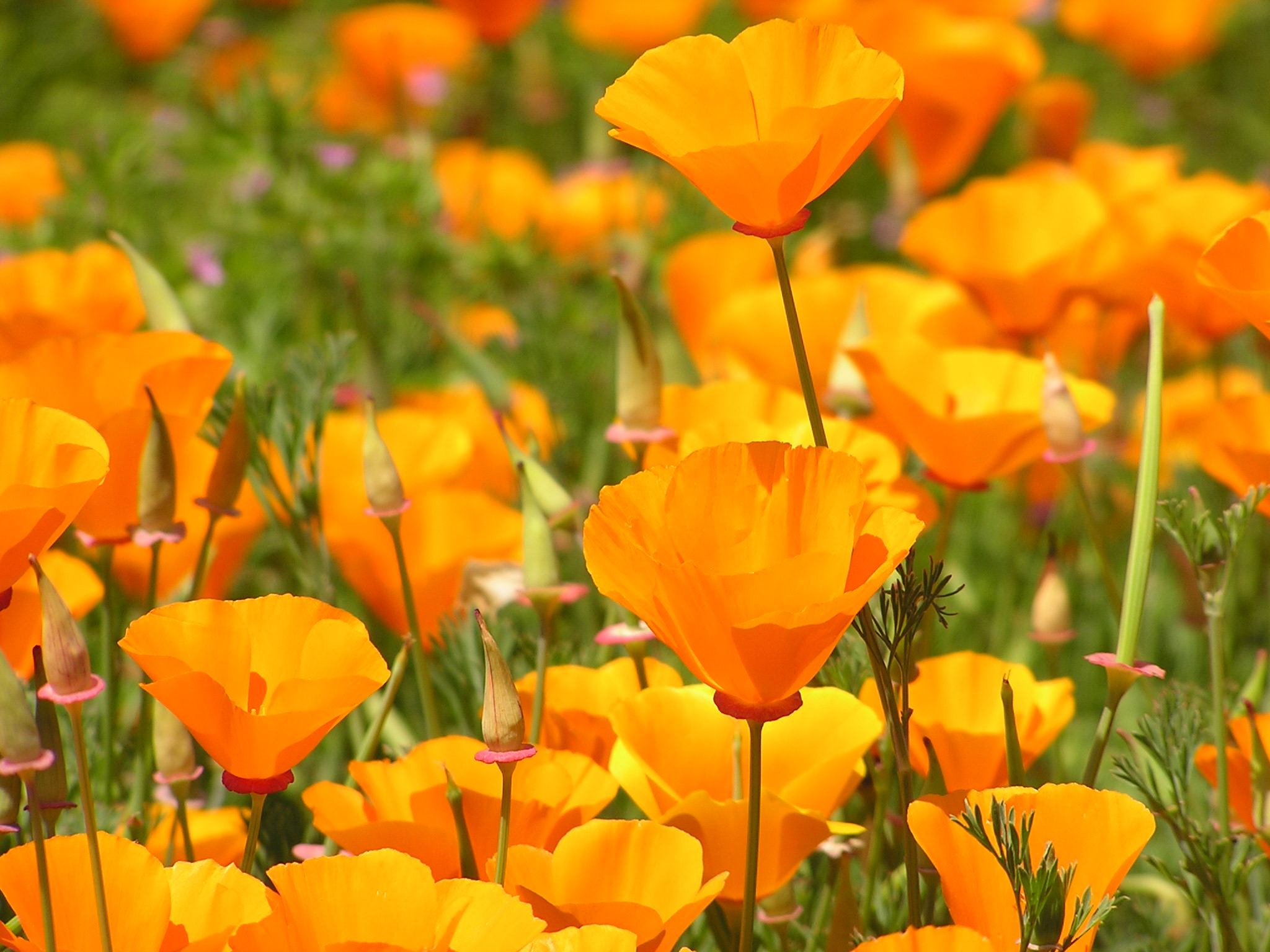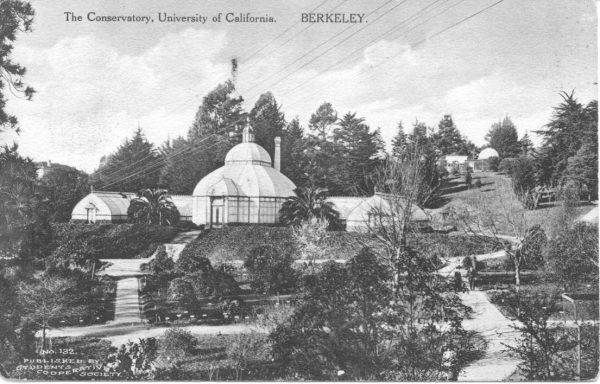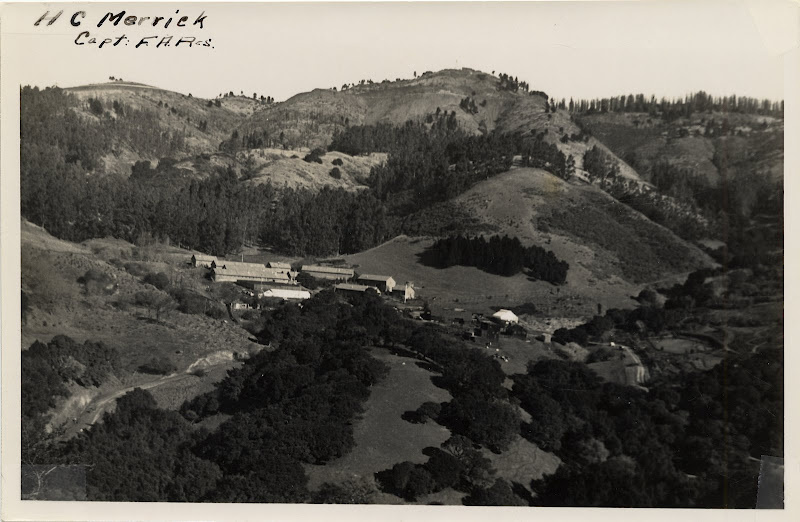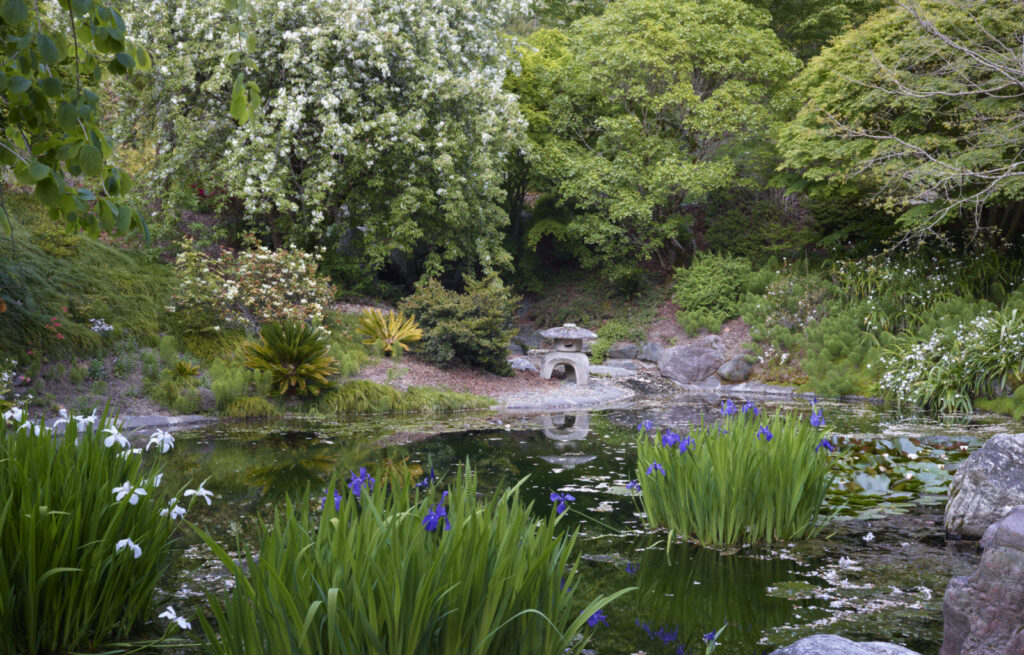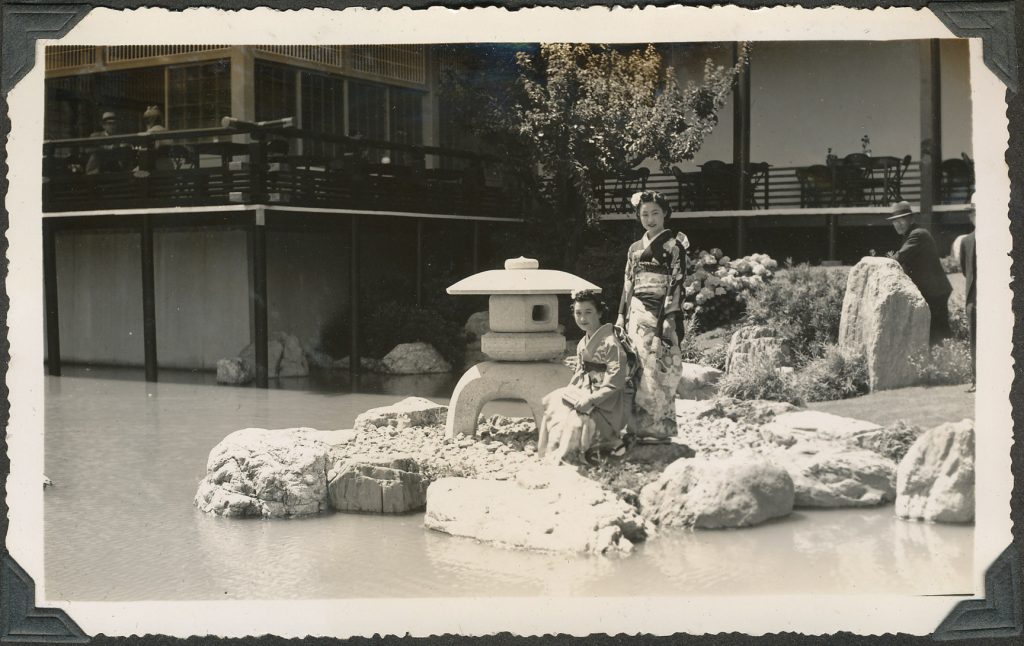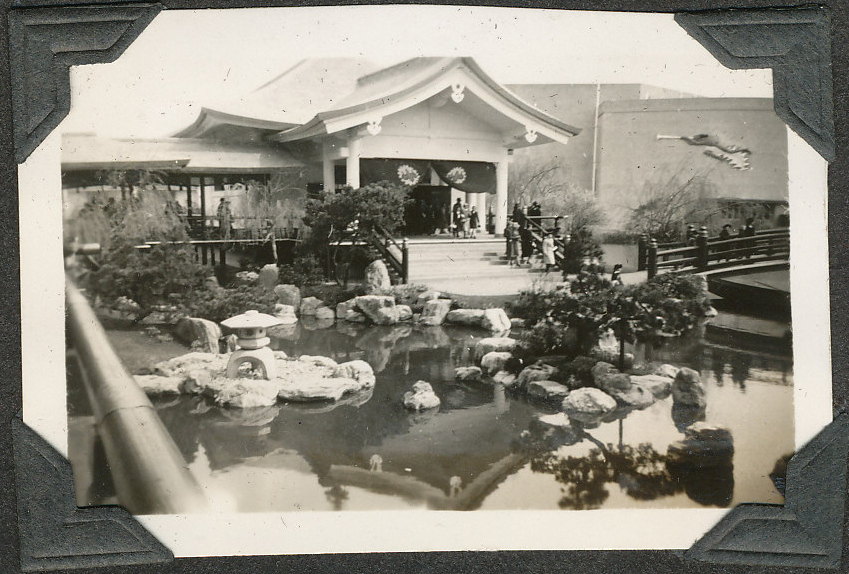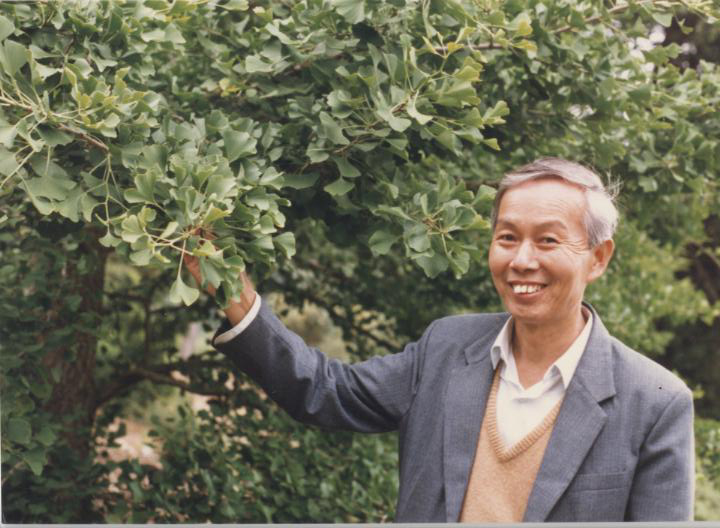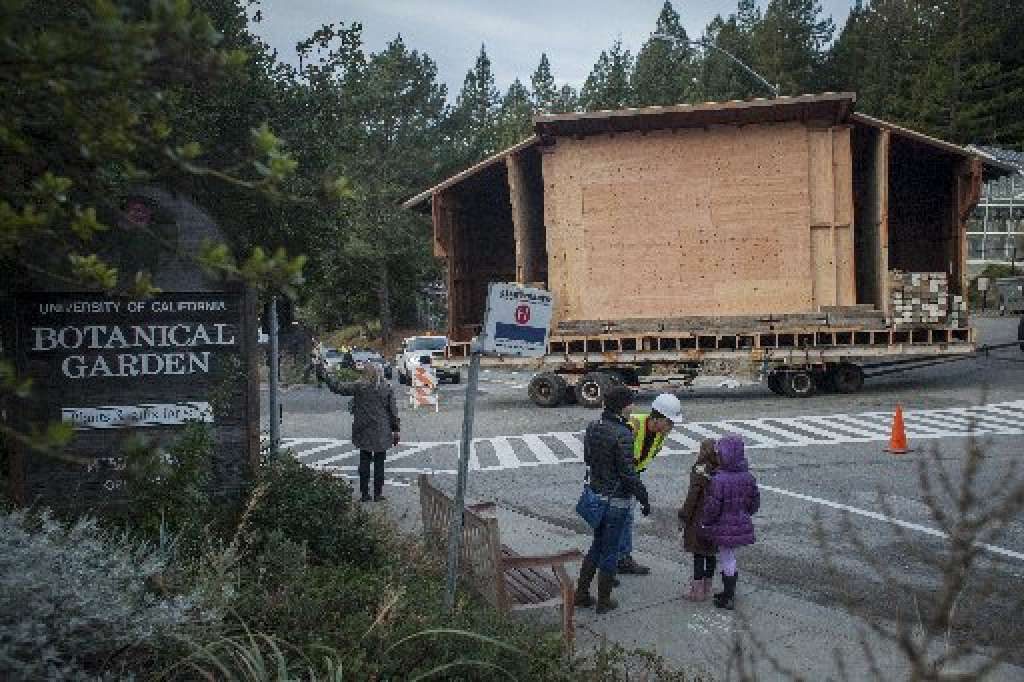About The Garden
Mission
Our mission is to develop and maintain a diverse living collection of plants, to support teaching and worldwide research in plant biology, further the conservation of plant diversity, and promote public understanding and appreciation of plants and the natural environment.
Who We Are
The 34-acre UC Botanical Garden is one of the most diverse landscapes in the world, with over 10,000 types of plants including many rare and endangered species. Organized geographically, the Garden features 9 regions of naturalistic plantings from Australasia to South Africa, along with a major collection of California native plants. The Garden was established in 1890 and its living collections are invaluable resources for international research and conservation.
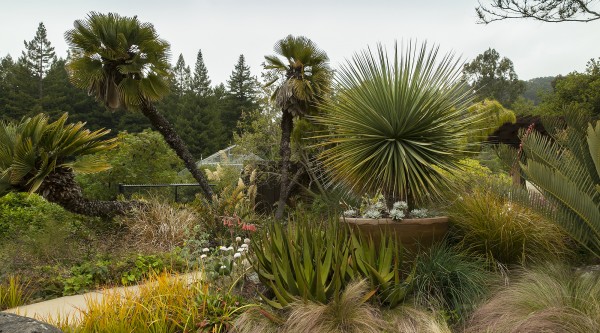
History
The land on which the University and Garden sits is recognized as the territory of xučyun (Huichin), the ancestral and unceded land of the Chochenyo speaking Ohlone people; read more here.
The University of California was founded in 1868. In the 1870s, Dr. Eugene W. Hilgard (1833-1916), founding Dean of Agriculture, established a small garden of economic plants on the Berkeley campus on the site currently occupied by Moffit Library. The University of California Botanical Garden was formally established in 1890 by E. L. Greene, the first chairman of the Department of Botany, to form a living collection of the native trees, shrubs, and herbaceous plants of the State of California, with the intent to further gather as rapidly as possible those of the neighboring states of the Pacific Coast. Within two years the collection numbered 600 species. In the following decade it grew to 1500, but then began to expand both its scope and collection to encompass plants from all continents and about 10,000 species.
The original Botanical Garden was located near Haviland Hall on the north side of campus centered around a large glass conservatory modeled after the London Crystal Palace. In 1925 the Garden was relocated to its current home on 34 acres in Strawberry Canyon above main campus.
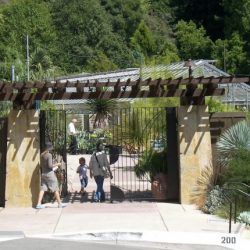
Garden Timeline
1890 – The UC Botanical Garden
The University of California Botanical Garden was formally established in 1890 by E. L. Greene, the first chairman of the Department of Botany, to form a living collection of the native trees, shrubs, and herbaceous plants of California, with the intent to gather in as rapidly as possible those of the neighboring states of the Pacific Coast. Within two years the collection numbered 600 species.
1894 – The Conservatory
At the center of the original UC Botanical Garden was a large glass and steel conservatory. Built in 1894 by Lord and Burnham at a cost of $16,000, the conservatory was modeled after the London Crystal Palace. It was the result of a 1880s campaign by agriculture professor Eugene Hilgard, who lobbied the UC Regents for its construction and was closely involved in its planning. Hilgard, regarded as the father of soil science, even traveled to Europe in 1893, delaying work on the project while he inspected prominent conservatories across the continent.
The main part of the conservatory housed palm trees, and the wings included a cellar, potting shed, and a boiler room. In 1924, as part of the campus’s expansion, including the construction of Haviland Hall, the botanical garden was relocated and the conservatory torn down. The site of the conservatory eventually became a parking lot. In 2005, in anticipation of the construction of the Tien Center, anthropology students excavated the site. Findings included thermometer fragments, flower pots of various sizes, plant tags, glass droppers, a watch-chain loop, a number of marbles, an antique brass button featuring a bas-relief of Minerva from the Great Seal of California, and a 116-year-old dime, minted just 18 years after the campus opened its doors.
1909 – Strawberry Canyon Purchased
Strawberry Canyon is purchased by the University of California Berkeley.
1925 – Move to Strawberry Canyon
In the 1920’s plans for campus development forced the Botanical Garden out of its initial central campus location. Between 1925 and 1928, under the guidance Thomas Harper Goodspeed, the Garden was relocated to its current position on 34 acres in Strawberry Canyon above the main campus. Here, he said, “the eastward moving air draft from the Golden Gate … with consequent moderating influences on summer temperature and humidity permit an association of plants, birds, and mammals not duplicated elsewhere in middle western California.”
Although not officially named Curator of the Garden until 1926, it was Goodspeed who planned the Garden with assistance from J.W. Gregg, professor in the Department of Landscape Design, and supervised its construction. In departure from traditional botanical gardens, Goodspeed decided to group the collections primarily by geographic regions in settings resembling the native habitats. This principle remains central to Garden policy today.
1932 – 1935 – The Origins of the New World Desert
James West (aka Prince Egon von Ratibor) established an extensive rock garden in 1932 which would later become the area known today as the Deserts of the Americas collection. This garden was planted with specimens from his own personal collection and some transplanted cactus specimens from the main campus. The director of the Garden, Dr. T.H. Goodspeed, was an ardent supporter of the succulent and cactus collection and encouraged its expansion. The present collection started taking shape after the Andean expedition in 1935, the first in a series of collecting trips that continued for 30 years.
1933 – Civilian Conservation Corps
Much of the grounds clearing and trail building was accomplished by Civilian Conservation Corps Company 751 who were assigned to Strawberry Canyon from October 5, 1933 to May 31, 1934. Over 200 young men from Nebraska and Missouri built check dams, constructed roads, and thinned the young tree plantations in the adjacent “primitive area” (now designated an Ecological Study Area). This work established the context for the Garden we know today and developed a number of projects familiar to Garden visitors today including the stone bridge across Strawberry Canyon Creek and Mather Redwood Grove.
1934 – Director Thomas Harper Goodspeed
Thomas Harper Goodspeed officially became the Director of the UC Botanical Garden in 1934 and remained so until 1957. He had been a key figure in the operation of the UC Botanical Garden throughout the 1920s, becoming Garden Curator in 1926 and overseeing the Garden’s relocation to Strawberry Canyon.
Originally drawn to the Botanical Garden because of his work attempting to trace the origin, via hybridization, of the numerous varieties of cultivated Nicotiana (tobacco and its close relatives), Goodspeed was able to continue his research as Director and maintained an almost complete collection of the species.
Over the course of his long tenure as Director, he developed significant collections of the Garden. Major early additions included the Rhododendron Dell, the New World Desert and associated cactus and succulent collections, and the California Redwood Grove (now Stephen J. Mather Redwood Grove). These were followed by the addition of the Chinese Dawn Redwoods (Metasequia) from one of the earliest expeditions to China by Berkeley paleobotanist Dr. Ralph Chaney.
Goodspeed also initiated a series of six expeditions to the Andes (carried out between 1935 and 1958). Their primary objective was to collect all species of the genus Nicotiana, with determination of their ranges. A secondary objective was collection of Andean plants in botanically unknown areas, and which led to the acquisition of a magnificent collection of South American cacti and succulents.
1939 – The Japanese Pool
When the Golden Gate Exhibition on Treasure Island closed in 1939, the Japanese exhibit was donated to the UC Botanical Garden on behalf of the Japanese government with the aid of the UC Japanese Alumni association. The exhibit consisted of a stone from Japan with lanterns and a bridge displayed as a Japanese garden and pool. Kaneji Domoto, a prominent Bay Area landscape architect, oversaw the design of the exhibit on both Treasure Island and at the Garden.
1947 – 1948 – Expedition to Africa
The collection was enlarged by Robert J. Rodin’s University expedition to Africa in 1947-48, which added a singularly large collection of succulents from Southern Africa to the Garden.
1957 – 1969 – Director Herbert Baker
Following Goodspeed’s retirement in the 1950s the Garden directorship passed to Herbert Baker. Under his tenure the collections were further expanded. A seventh expedition, to Bolivia and Peru in 1964, was carried out by garden botanist Paul Hutchison, which added more succulents as well as tropical plants to the collections. Notable additions included major collections from Mesoamerica , Australia and New Zealand , expansion of the Californian native plant collection, and development of a section for economic plants. Baker instituted a major policy change: other than for a few special exceptions all plants accessioned by the Garden must have complete data on their natural origins. Adherence to this policy has endowed the collection with substantial value for researchers world wide.
1962 – Flooding
In October 1962, 15 inches of rain fell in three days and Strawberry Creek was flooded, sweeping away all the plants along its banks. The Japanese Pool was completely destroyed and the lanterns and many of the 150 boulders involved in the pool’s construction were carried down downstream in the raging torrent. Thanks to the hard work of staff and workstudy students, much of the damage was repaired and the pool was restored. Only one of the lamps, however, was ever recovered, and it stands alone by the pool to this day.
1974 – Outreach and Docents
Under the leadership Robert Ornduff (1974-1991) the Garden launched into a program of outreach to the wider community, becoming the only one of the five natural history museums at UC Berkeley that is open to the public.
A docent program was inaugurated in 1974. Each year the Garden’s corps of almost 100 docents lead many hundreds of tours for thousands of school children, adults, and university students.
1976 – Mather Redwood Grove Dedication
In 1976 the Mather Redwood Grove was dedicated in honor of Steven T Mather, a graduate of UC Berkeley in 1884 and the founding director of the National Park Service in 1916
1976 – Friends of the Botanical Garden
The Friends of the Botanical Garden was established in 1976 as a support group for fundraising and involving the general public in volunteer activities.
1987 – Chinese Medicinal Herb Garden
The Chinese Medicinal Herb Garden is installed at the UC Botanical Garden.
1989 – College of Natural Resources
The Garden is placed under the control of the College of Natural Resources.
1996 – Office of the Vice Chancellor for Research
Management of the Garden is transferred to the Office of the Vice Chancellor for Research.
2005 – A new entrance and plaza are completed
2014 – Julia Morgan Hall comes to the Garden
A complex effort to move Julia Morgan Hall (formerly Girton Hall) building from central campus up the hill was completed on January 12, 2014, after the rustic structure was separated into four pieces, raised, and trucked slowly up Centennial Drive to its new home in the Garden.
2015 – 125th Anniversary
The Garden celebrates its 125th Anniversary!
Renovation of the Redwood Amphitheater is completed with new seats, stage, and pathwork.
2016 – Director Eric Siegel
Eric Siegel becomes Director of the UC Botanical Garden following the retirement of Paul Licht.

